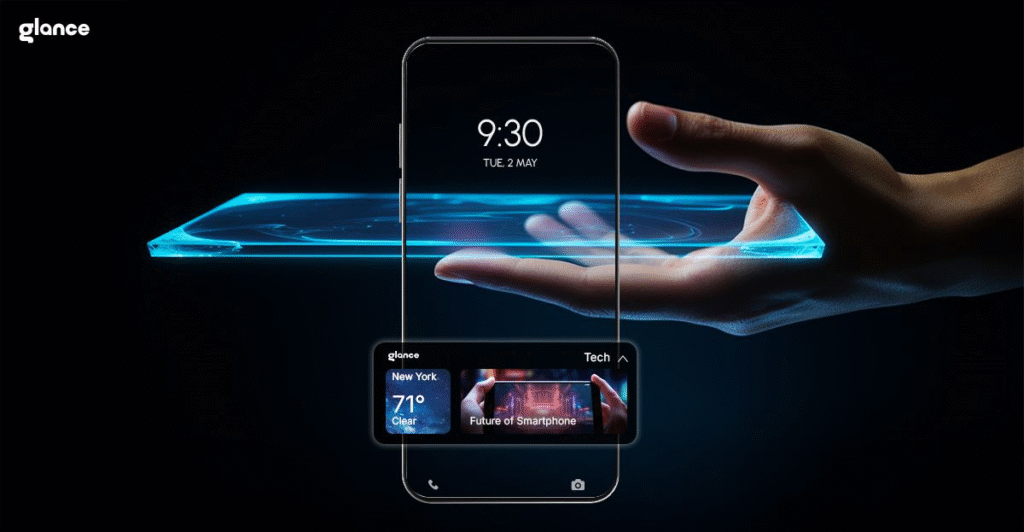In a world dominated by smartphones, low-connectivity phones—sometimes called minimalist or “dumb” phones—are emerging as a surprising wellness trend. These devices help users reduce digital overload, improve mental health, strengthen relationships, and enhance productivity. For those seeking mindfulness and intentional living, they provide a practical and effective solution.
The Age of Digital Overload
Smartphones have transformed how we communicate, work, and entertain ourselves. From instant messaging to social media feeds and streaming platforms, the average American spends nearly 4–5 hours per day on their smartphone.
While connectivity has brought undeniable benefits, it has also resulted in digital burnout, marked by:
- Constant stress and anxiety
- Decreased attention spans
- Reduced sleep quality
- Strained personal relationships
Mental health professionals are warning about the negative consequences of digital overload. Afound that unplugging even partially from smartphones can significantly reduce stress and improve mood.
It’s in this environment that low-connectivity phones are gaining popularity—not just as gadgets but as tools for wellness and lifestyle transformation.
What Exactly Are Low-Connectivity Phones?
Low-connectivity phones focus on simplicity, providing essential functions like calling and texting while intentionally restricting internet access, social media, and distracting apps. They fall into three main categories:
1. Minimalist Smartphones
These devices resemble traditional smartphones but limit app functionality and notifications. Some even include “focus modes” that allow calls and essential apps only.
2. Feature Phones
Often considered the “classic” mobile phone, feature phones focus purely on voice calls and text messaging, offering long battery life and durability.
3. Dumb Phones
These devices intentionally avoid internet functionality altogether. Users can only call or text, making them ideal for individuals seeking to disconnect completely from digital distractions.
Real-Life Example:
Emily, a software engineer in Boston, switched from a flagship smartphone to a dumb phone. She reports feeling more present during family meals and has significantly reduced her late-night scrolling habits.
The Digital Detox Movement
Digital detox—the intentional reduction of screen time—is no longer niche. Studies show that reducing smartphone use can:
- Lower anxiety levels by up to 25%
- Improve sleep patterns and reduce insomnia
- Increase focus and productivity
The trend has become particularly relevant as over 70% of Americans report feeling overwhelmed by notifications and digital demands. Low-connectivity phones are seen as a practical tool for achieving a digital detox.

10 Benefits of Low-Connectivity Phones
1. Enhanced Mental Health
Continuous notifications, social media comparisons, and digital multitasking contribute to stress, anxiety, and depression.
- Real-life insight: Sarah, a marketing executive in New York City, reported reduced anxiety after switching to a minimalist phone. She describes feeling “mentally lighter” and more in control of her daily routines.
- Studies show that reducing social media exposure can improve mood and reduce feelings of inadequacy.
2. Improved Sleep Quality
Smartphone use before bed disrupts the circadian rhythm due to blue light exposure.
- Low-connectivity phones encourage offline evenings, reducing screen exposure and improving melatonin production.
- Users often report falling asleep faster and feeling more rested in the morning.
3. Strengthened Personal Relationships
Without constant notifications, individuals can engage more meaningfully with family and friends.
- Case in point: Tom, a college student, found his conversations with roommates became deeper and more thoughtful after switching to a feature phone.
4. Increased Productivity
Smartphones are notorious for breaking focus, leading to multitasking inefficiency.
- Low-connectivity devices remove distractions, allowing longer periods of deep work.
- Professionals have reported completing tasks 30–50% faster after limiting digital interruptions.
5. Reduced Digital Addiction
Compulsive smartphone use can create unhealthy cycles.
- By switching to low-connectivity phones, users regain control over their habits and reduce dependence on notifications.
6. Mindful Living
Minimalist phones encourage intentional living, helping users to prioritize activities that truly matter.
- For instance, users often replace scrolling with reading, exercising, or pursuing hobbies.
7. Financial Benefits
- Minimalist phones are often cheaper than flagship smartphones.
- Reduced app subscriptions and in-app purchases can save hundreds of dollars per year.
8. Longevity and Durability
Feature phones often last years longer than high-end smartphones due to simpler hardware and software.
9. Less Exposure to Cyber Threats
- With limited internet access, low-connectivity phones are less vulnerable to hacking and phishing attacks.
10. Encourages Outdoor and Physical Activities
- By disconnecting from digital devices, users often spend more time outdoors, walking, hiking, or engaging in fitness activities, which improves overall wellness.
How to Transition to a Low-Connectivity Lifestyle
Switching isn’t always easy, but it can be gradual and rewarding.
- Assess Your Digital Habits
- Track how much time you spend online
- Identify apps or activities causing the most distraction
- Select the Right Device
- Minimalist smartphone for essential apps only
- Feature or dumb phone for complete digital minimalism
- Set Usage Boundaries
- No devices during meals or before sleep
- Limit work emails to certain hours
- Engage in Offline Activities
- Hobbies like reading, drawing, gardening, or hiking
- Social interactions in person rather than online
- Seek Community Support
- Join forums or social media groups dedicated to digital wellness
Pro Tip: Start with a hybrid approach—reduce smartphone use gradually before fully switching.

Common Concerns and Solutions
1. What is a low-connectivity phone, and how is it different from a regular smartphone?
A low-connectivity phone, also called a minimalist or “dumb” phone, is designed to prioritize basic communication—like calling and texting—while intentionally limiting internet access, social media apps, and other distracting functionalities. Unlike regular smartphones, which provide endless apps and notifications, low-connectivity devices are focused on simplicity and intentional use.
For example, feature phones have long battery life and sturdy hardware, making them ideal for users who want minimal interruptions. Minimalist smartphones might allow a few essential apps but restrict notifications and background data. Users often report reduced anxiety, improved focus, and better sleep after switching.
2. How do low-connectivity phones improve mental health?
Smartphone overuse has been linked to stress, anxiety, and even depression. A 2025 survey by the American Psychiatric Association found that reducing screen time significantly lowers stress and improves mood.
Low-connectivity phones eliminate constant notifications, social media comparisons, and multitasking demands. This allows your brain to recover from cognitive overload, focus better on tasks, and engage in real-world interactions, which are essential for mental wellness.
Example: Sarah, a marketing executive in NYC, replaced her smartphone with a minimalist phone. Within weeks, she reported feeling calmer, sleeping better, and enjoying conversations with her family without distractions.
3. Will I fall behind on important work or news if I switch to a low-connectivity phone?
Not necessarily. Low-connectivity phones allow essential communications, such as phone calls and SMS. For urgent emails or work notifications, users can:
- Set a separate work email device
- Check messages during pre-scheduled times
- Use forwarding services for critical notifications
Most users find that they don’t miss as much as they fear. In fact, fewer distractions often result in higher productivity, as your attention is focused on the tasks that matter most.
4. How do low-connectivity phones affect sleep quality?
Exposure to blue light from screens suppresses melatonin production, making it harder to fall asleep. Studies show that reducing screen time before bed improves sleep quality and duration.
By using a low-connectivity phone, users can:
- Avoid late-night scrolling
- Reduce mindless notifications that trigger stress
- Create a healthier bedtime routine
Example: Tom, a college student, switched to a dumb phone for evening use and reported falling asleep faster and feeling more refreshed in the morning.
5. Can children or teenagers benefit from low-connectivity phones?
Yes, many parents are adopting minimalist phones for their children to limit screen time and digital distractions. Benefits include:
- Improved focus on homework and studies
- Enhanced face-to-face communication skills
- Reduced exposure to social media stressors
However, supervision is essential. Parents should explain the benefits of a simpler device while maintaining access for emergencies.
6. How can I transition from a smartphone to a low-connectivity phone smoothly?
Transitioning doesn’t have to be abrupt. Follow these steps for a smooth change:
- Audit your digital habits: Identify apps or notifications that cause the most distraction.
- Choose the right phone: Decide between a feature phone, dumb phone, or minimalist smartphone.
- Set boundaries: Schedule specific times for calls or necessary internet use.
- Replace screen time with hobbies: Reading, walking, or creative activities help fill the time.
- Track progress: Note changes in sleep, productivity, and mental wellness.
Gradual adoption often leads to higher success rates and less frustration during the adjustment period.
7. Are low-connectivity phones expensive or cost-effective?
Low-connectivity phones are generally more affordable than high-end smartphones.
- Minimalist smartphones range from $150–$400
- Feature phones can cost as little as $30–$80
In addition, users often save money by avoiding unnecessary apps, in-app purchases, and premium subscriptions. The investment in mental wellness and productivity often outweighs the upfront cost.
8. Can low-connectivity phones really boost productivity?
Yes. The constant barrage of notifications and app updates in smartphones causes frequent task-switching, which decreases productivity.
- Studies show multitasking reduces efficiency by up to 40%
- By eliminating distractions, low-connectivity phone users report completing work 30–50% faster
Example: A freelance designer replaced her smartphone with a minimalist phone and noted she could finish client projects faster without constantly checking social media or messages.
9. Are there health risks associated with traditional smartphones that low-connectivity phones avoid?
Prolonged smartphone use is linked to several health concerns:
- Eye strain and headaches
- Sleep disruption due to blue light
- Increased anxiety and depression
- Texting-related physical strain (e.g., thumb or wrist pain)
Low-connectivity phones reduce these risks by limiting screen exposure, notifications, and repetitive device use. Many users experience fewer headaches, improved posture, and better emotional balance.
10. Can I use a low-connectivity phone for emergencies?
Absolutely. Most low-connectivity phones support calling and SMS, which are sufficient for emergency communication. Some models also support GPS or limited internet access for navigation or alerts.
For critical situations, you can combine your minimalist phone with:
- Emergency apps on a separate device
- Scheduled check-ins with friends/family
- Forwarded messages for urgent work updates
This ensures safety without compromising the benefits of digital minimalism.
Dr. Caroline O’Neal, a clinical psychologist, states:
“Constant digital connectivity has measurable impacts on stress and cognitive function. Minimalist phones provide a practical solution for people seeking balance without completely abandoning technology.”
Tech journalist Mark Sullivan adds:
“The appeal of low-connectivity phones is not nostalgia—it’s control. Users are reclaiming their attention and reclaiming their lives.”
Future Outlook: Are Minimalist Phones Here to Stay?
The trend is gaining momentum among:
- Professionals seeking productivity gains
- Parents aiming to reduce children’s screen time
- Mental health advocates promoting digital wellness
As more people recognize the psychological benefits, low-connectivity phones may become a mainstream wellness tool, not just a niche gadget.
Conclusion
Low-connectivity phones are more than just gadgets—they are tools for wellness, productivity, and intentional living. In a world where digital demands dominate, choosing to disconnect can be a revolutionary act of self-care. By embracing these devices, individuals reclaim time, mental clarity, and deeper connections with the people around them.
The unexpected wellness trend of low-connectivity phones is not about rejecting technology—it’s about using it wisely, purposefully, and mindfully.

